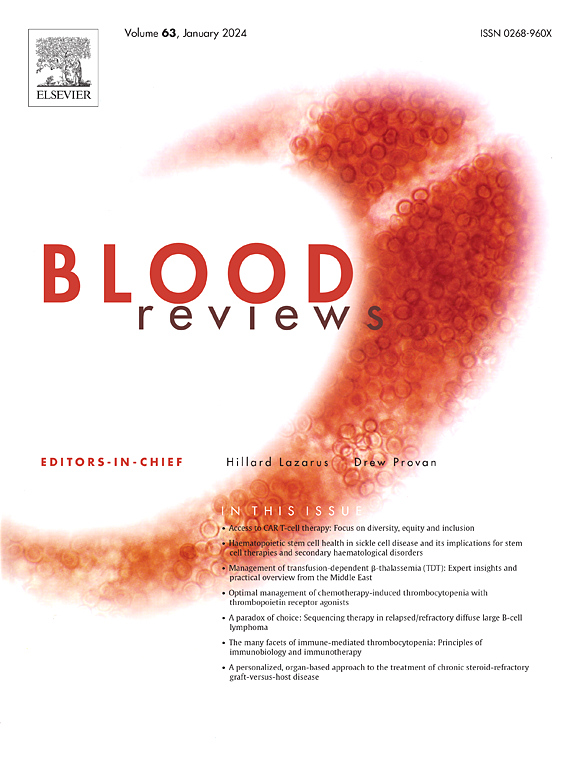Suppression to removal, an emerging therapeutic approach for AL amyloidosis: A comprehensive review with early human data and pharmacokinetics of CAEL-101 antibody
IF 5.7
2区 医学
Q1 HEMATOLOGY
引用次数: 0
Abstract
Light chain (AL amyloidosis) is a rare disorder characterized by the deposition of misfolded light chains in various organs, causing progressive organ damage. Current therapeutic agents do not remove amyloid aggregates already present in the organs, which are the major determinants of morbidity and mortality. Therefore, drugs targeting amyloid fibrils are currently being investigated. This article provides a comprehensive review of a novel, fibril-directed antibody, CAEL-101 (Anselamimab), which removes fibrillary aggregates from the organs, restoring organ function. Overall, CAEL-101 has demonstrated a favorable toxicity profile and improved organ responses, with faster treatment response time than current therapies in phase I/II trials, and is expected to have promising outcomes in the ongoing phase III studies. Combining anti-plasma cell dyscrasia (suppression) and fibril-directed agents (removal) is a novel therapeutic approach, providing optimism for organ function recovery and enhanced quality of life and survival, especially in patients with severe diseases.
抑制去除,AL淀粉样变性的一种新兴治疗方法:早期人类数据和CAEL-101抗体药代动力学的综合综述
轻链(AL)淀粉样变性是一种罕见的疾病,其特征是在各种器官中沉积错误折叠的轻链,引起进行性器官损害。目前的治疗药物不能去除已经存在于器官中的淀粉样蛋白聚集体,这是发病率和死亡率的主要决定因素。因此,目前正在研究针对淀粉样蛋白原纤维的药物。这篇文章提供了一种新的,原纤维定向抗体CAEL-101 (Anselamimab)的全面回顾,它从器官中去除原纤维聚集体,恢复器官功能。总体而言,在I/II期试验中,CAEL-101已显示出良好的毒性特征和改善的器官反应,治疗反应时间比目前的治疗更快,并且预计在正在进行的III期研究中有很好的结果。结合抗浆细胞增生(抑制)和原纤维定向药物(去除)是一种新的治疗方法,为器官功能恢复和提高生活质量和生存提供了乐观的希望,特别是对于严重疾病的患者。
本文章由计算机程序翻译,如有差异,请以英文原文为准。
求助全文
约1分钟内获得全文
求助全文
来源期刊

Blood Reviews
医学-血液学
CiteScore
13.80
自引率
1.40%
发文量
78
期刊介绍:
Blood Reviews, a highly regarded international journal, serves as a vital information hub, offering comprehensive evaluations of clinical practices and research insights from esteemed experts. Specially commissioned, peer-reviewed articles authored by leading researchers and practitioners ensure extensive global coverage across all sub-specialties of hematology.
 求助内容:
求助内容: 应助结果提醒方式:
应助结果提醒方式:


